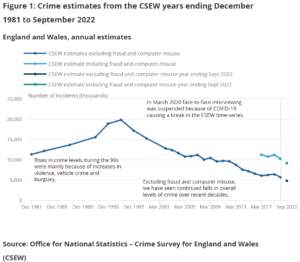Dear Minister,
Thank you for your letter of 17 April responding to concerns about statistics used in discussion of the backlog of outstanding asylum cases[1].
I very much welcome the clarification you made and your acknowledgment of the importance of accurate and appropriate use of evidence and statistics.
In a similar spirit, but on a different topic, concerns have been raised with us about your statement in the House of Commons on 20 March that:
“Today, a majority of the cases being considered for modern slavery are people who are coming into the country – for example, on small boats. We are seeing flagrant abuse, which is making it impossible for us to deal appropriately with the genuine victims, to the point that 71% of foreign national offenders in the detained estate, whom we are trying to remove from the country, are claiming to be modern slaves.”[2]
The Home Office advised us that the quoted figure comes from a recent report about modern slavery referrals for people detained for return after arriving in the UK in small boats[3] and that your statement was intended to refer to the proportion of foreign national offenders (FNOs) that are referred to the National Referral Mechanism (NRM) as potential victims of modern slavery.
The report explains that while an increasing proportion of all those in detention after arriving by small boat are referred to the NRM up from 52% in 2020 to 73% in 2021 (and subsequently falling to 65% between January and September 2022), the proportion among foreign national offenders is much lower (at around 20% between January and September 2022).
As you have acknowledged, it is important that published statistics and analysis are quoted accurately and are not misrepresented, to avoid the risk of misleading the public. We have written to the Home Office[4] previously about the importance of ensuring that it is clear whether claims on modern slavery, in particular those relating to people ‘gaming’ or ‘abusing’ the modern slavery system, are sourced from published statistics or from other reliable evidence.
Yours sincerely,
Sir Robert Chote
Chair
Footnotes
[1] Letter from Robert Jenrick MP to Sir Robert Chote – Asylum Backlog Statistics, 17 April 2023
[2] Illegal Migration Bill, Hansard, 20 March 2023
[3] Modern slavery referrals for people detained for return after arriving in the UK on small boats, Home Office
[4] Ed Humpherson to Jennifer Rubin: use of National Referral Mechanism statistics, 8 December 2022

